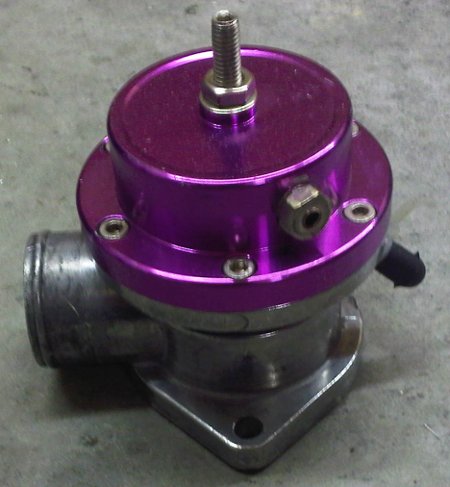TurboXS TypeH34 Blow Off Valve
Immediately following my installation of the Enkei GTC-01 wheels and the Dejon Tools Y-Pipe I picked up the strangest vibration. Under load, at high speeds, the car would start harshly vibrating, as if I was driving over the rumble strips on the side of an Interstate.
This vibration - which is really very violent - only happens under load, and while it only happens at high speeds (north of 100 km/h), is not specifically speed-dependant. It also doesn't show up in the AEM logs as knock or any other odd behaviour.
Given that it started happening just after the wheel and tire upgrade, plus the aftermarket Y-Pipe (which brought with it the crappy Chinese copy of a Greddy BOV) odds are that the vibration is directly related to one of these upgrades. The wheels and tires are unlikely to be the root cause; Tire Rack did a full road-force balance on them, plus the vibration only occurs under load. One would expect a tire imbalance vibration to occur at a set road speed and independent of load or coasting.
One possibility was that the crappy Chinese Greddy copy BOV - which I knew was leaking through the diaphragm because I had to cap off one of the extra hose bungs - was leaking air somewhere, and given that I'm still running in MAF mode, was causing incorrect air counts and a misfire or something similar. This seemed a little like grasping at straws, given that I could find no evidence of misfire in the logs, but I knew the problem had occurred once the OEM BOV came off, so it had to be either related to that or the wheels.
I also started investigating the driveshaft.
No matter what, I knew the faux-Greddy was crap, so I turned to the same model BOV that I had used on my Talon - the TurboXS Type H34.
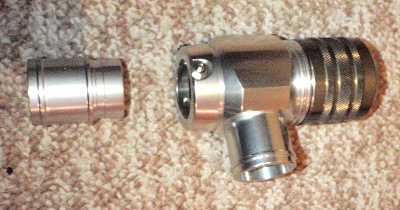
Strictly speaking, this isn't exactly the same BOV I used on the Talon. That model seems to have been discontinued. This version appears to be an update. It uses the same attachment method (a nifty O-ring seal that allows the BOV to be clocked 360°) but the housing is physically much larger than the previous model. It still uses the brass plunger design instead of a fragile rubber diaphragm, and it still uses a washer stack to set spring preload - both of which are selling points in my book, because this keeps the mechanism simple and reliable.
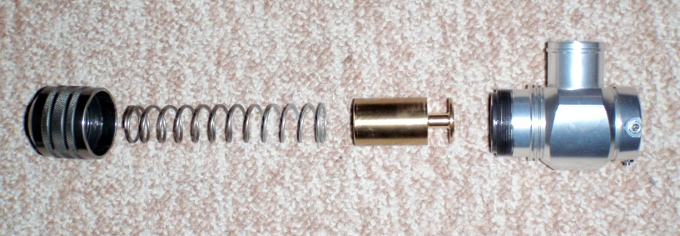
Oddly, TurboXS have chosen to machine the reference source nipple directly into the housing (one can see the tool marks) instead of using an NPT thread and a fitting. That will make it harder to use AN line or a 90° fitting to get a clean run of hose, but I can always machine off the nipple and tap it myself later.
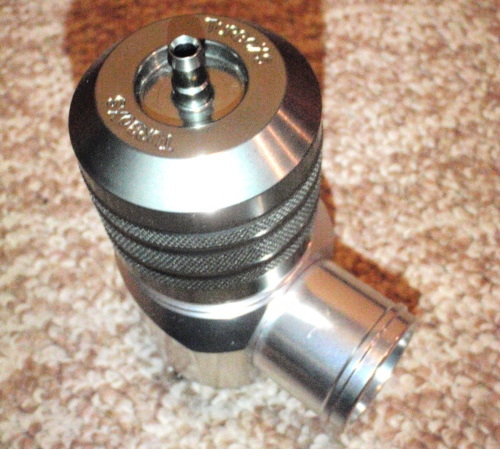
As always, I choose to run a recirculating valve rather than blow off to atmosphere. This is particularly important when running a MAF-based system (that air has been accounted for by the EMS and blowing it off is effectively a giant vacuum leak) but even on a speed/density system it just makes more sense from a spool perspective to recirculate the BOV exhaust.
So now it has to be mounted to the Y-pipe. TurboXS makes an adaptor for the Greddy mount flange, but I'm not keen on having two joints between the BOV and the pipe. Furthermore, the stack distance of adaptor stacked on adaptor pushes the BOV too far outboard of the pipe to fit well. So I'm going to need a TurboXS bung on the pipe.
TurboXS provide an aluminum bung for welding onto an aluminum pipe, but my pipe is steel, so I need a steel bung.
This is one of those times where it is very handy to own a small lathe/mill like my Smithy.

A couple of hours and a pile of steel chips later, I now have a 4130 steel bung for welding onto the pipe.
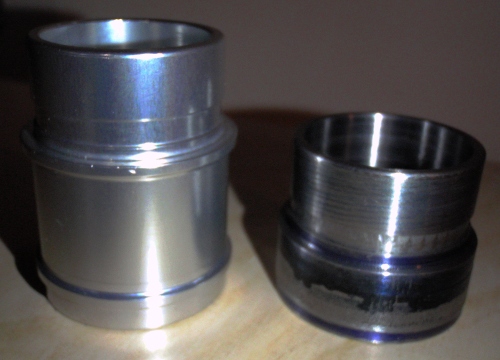
This is the other end of the finished bung. The shoulder is a slip fit into the original BOV pipe, under the old flange. The inside diameter has been bellmouthed so as to make a smooth airflow transition from the main pipe to the BOV inlet.
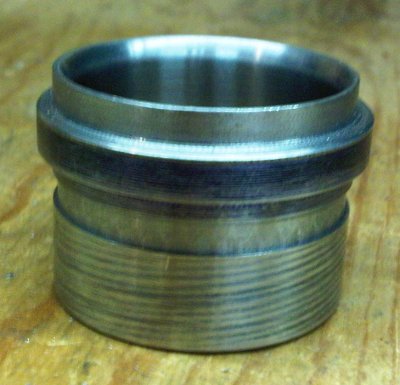
All welded up, thanks to Cunningham Sheet Metal
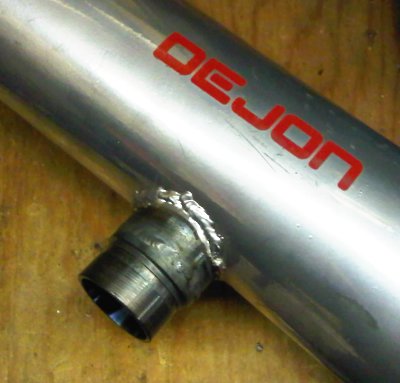
And finally, installed on the car and ready to go. Plenty of clearance to the battery and the MAF sensor, and the output recirculated back into the OEM location.
I am a big, big fan of this mounting method - strong, simple, and leak-proof.

Out on the road, the BOV does its job - holds boost, doesn't leak, and has a nice crisp blow-off sound that is loud enough to say "tuner" without being obnoxious. With no rubber diaphragm to leak and tear, long-term reliability is bound to be better too.
What it didn't do though was fix the high-speed, part-throttle vibration problem. Whatever that is, it lies elsewhere than a leaky BOV.
This was worth doing as an investment in reliability as well as enabling the use of higher than stock boost. Do it right, get the good stuff, and leave the Chinese copy stuff to the kiddies.
